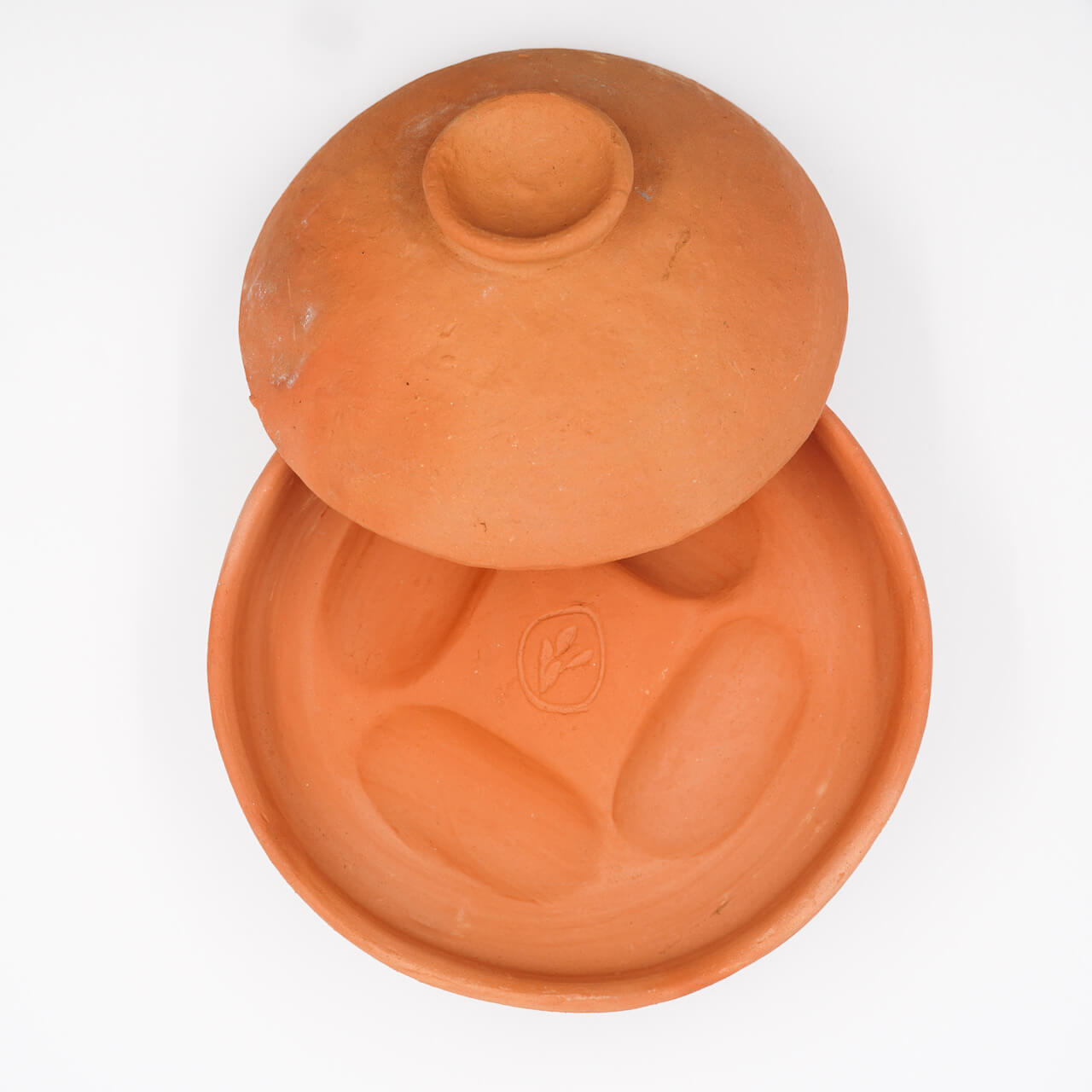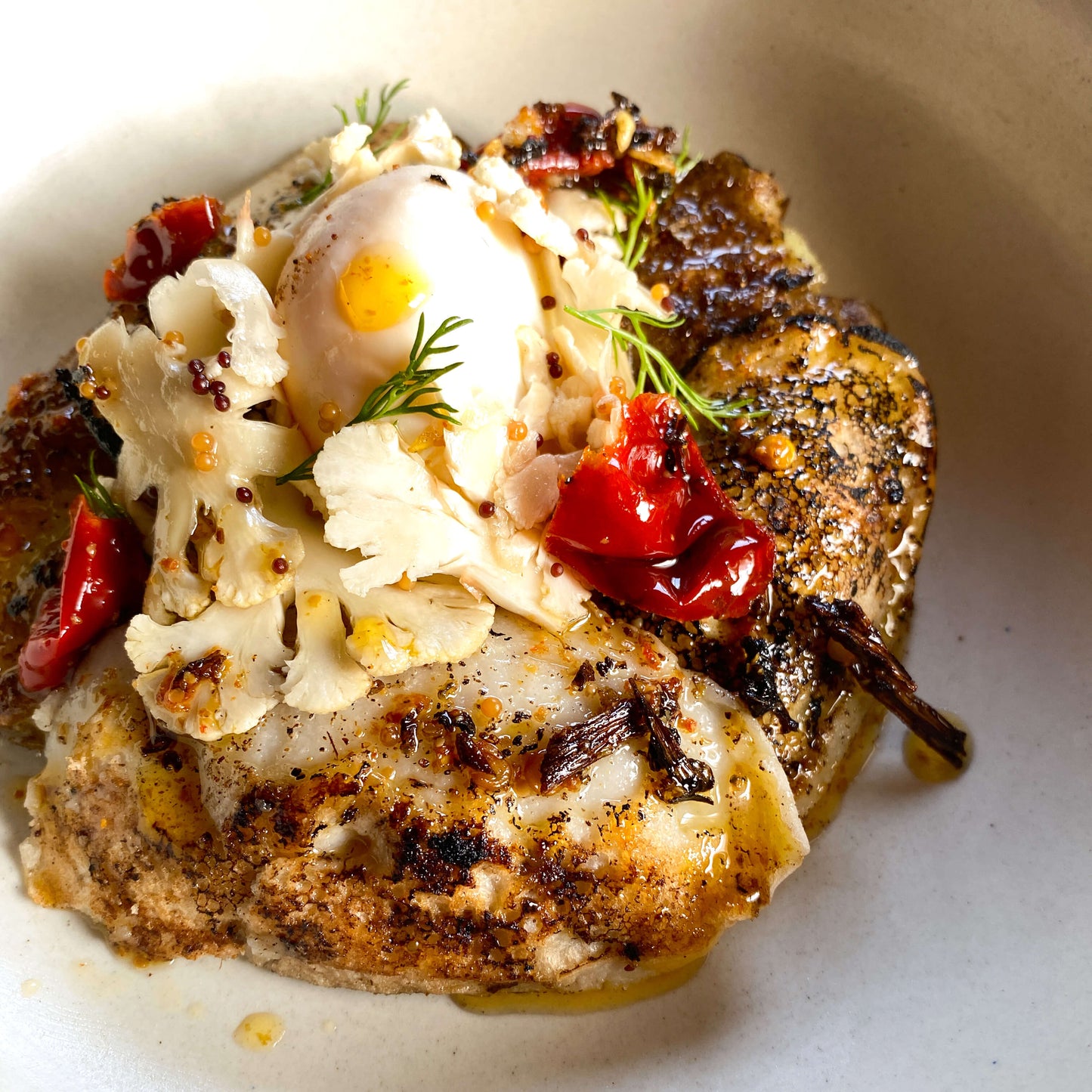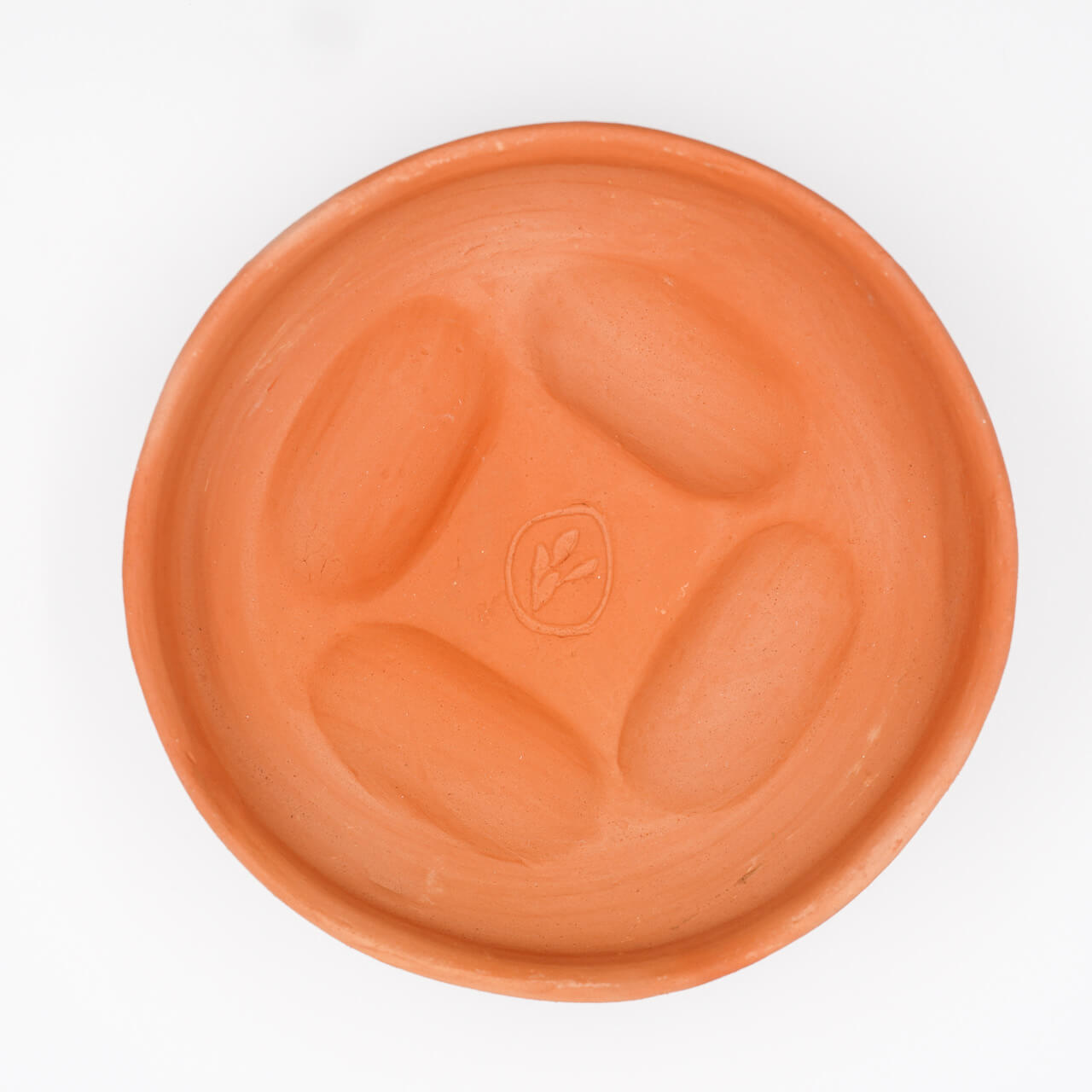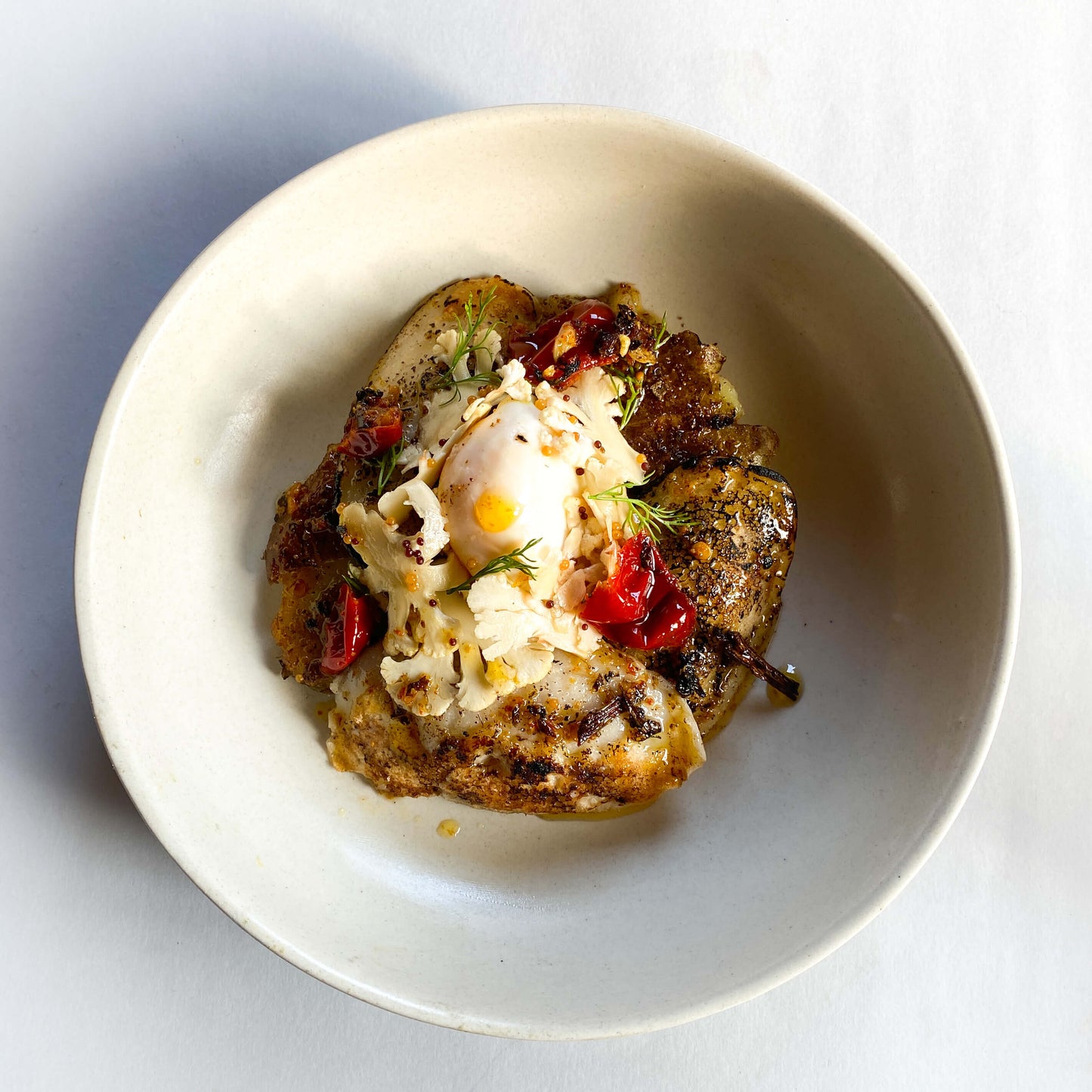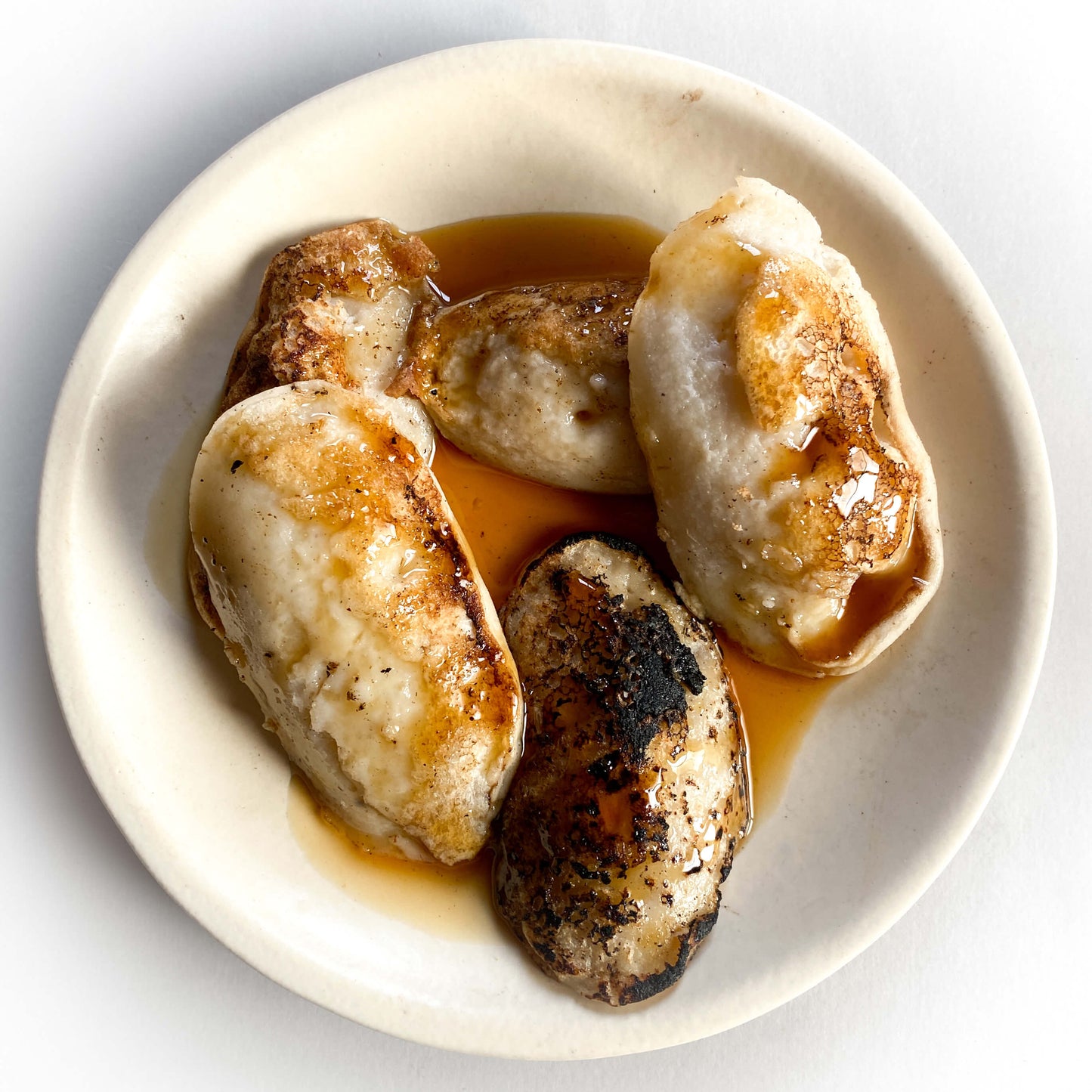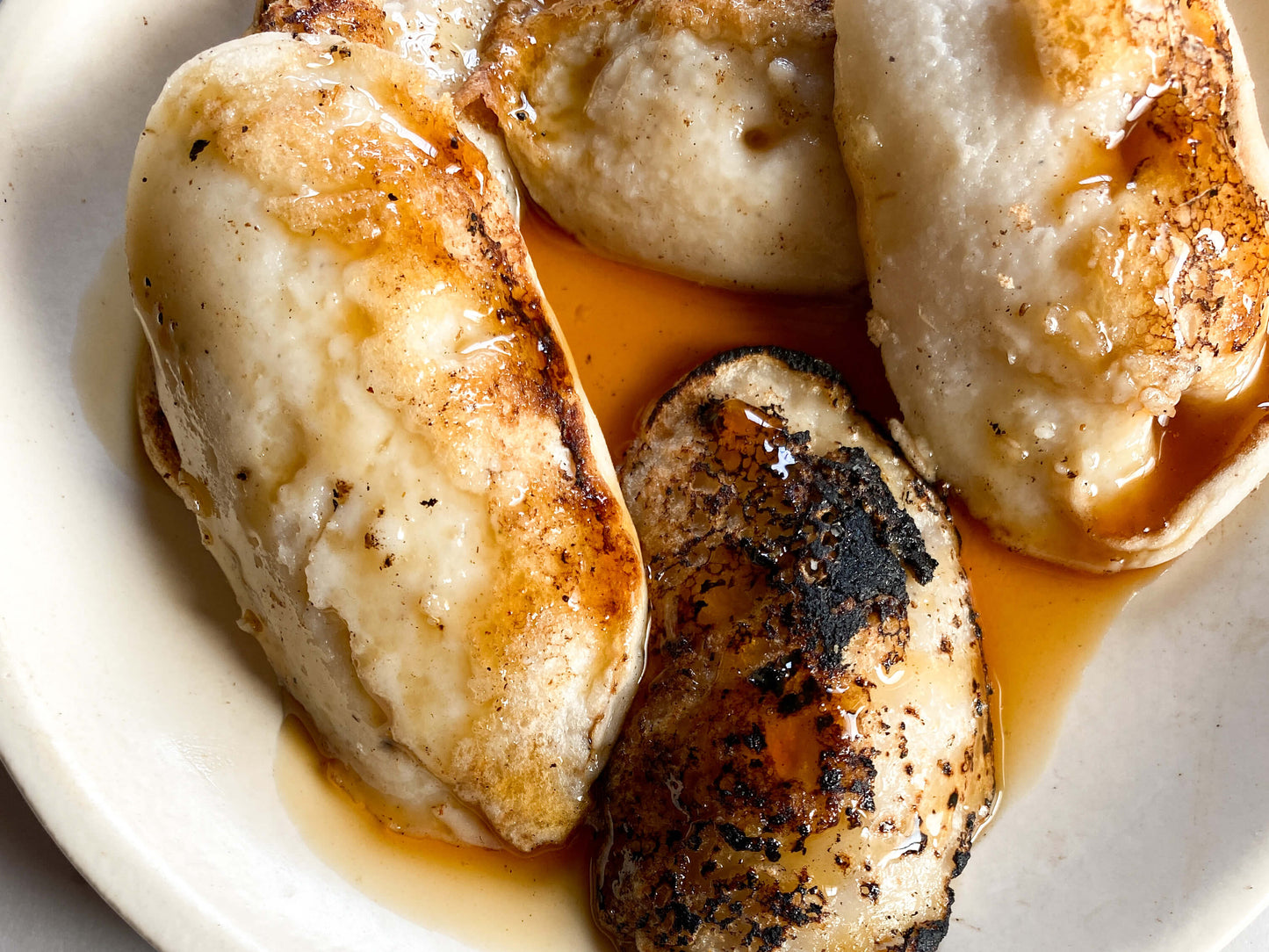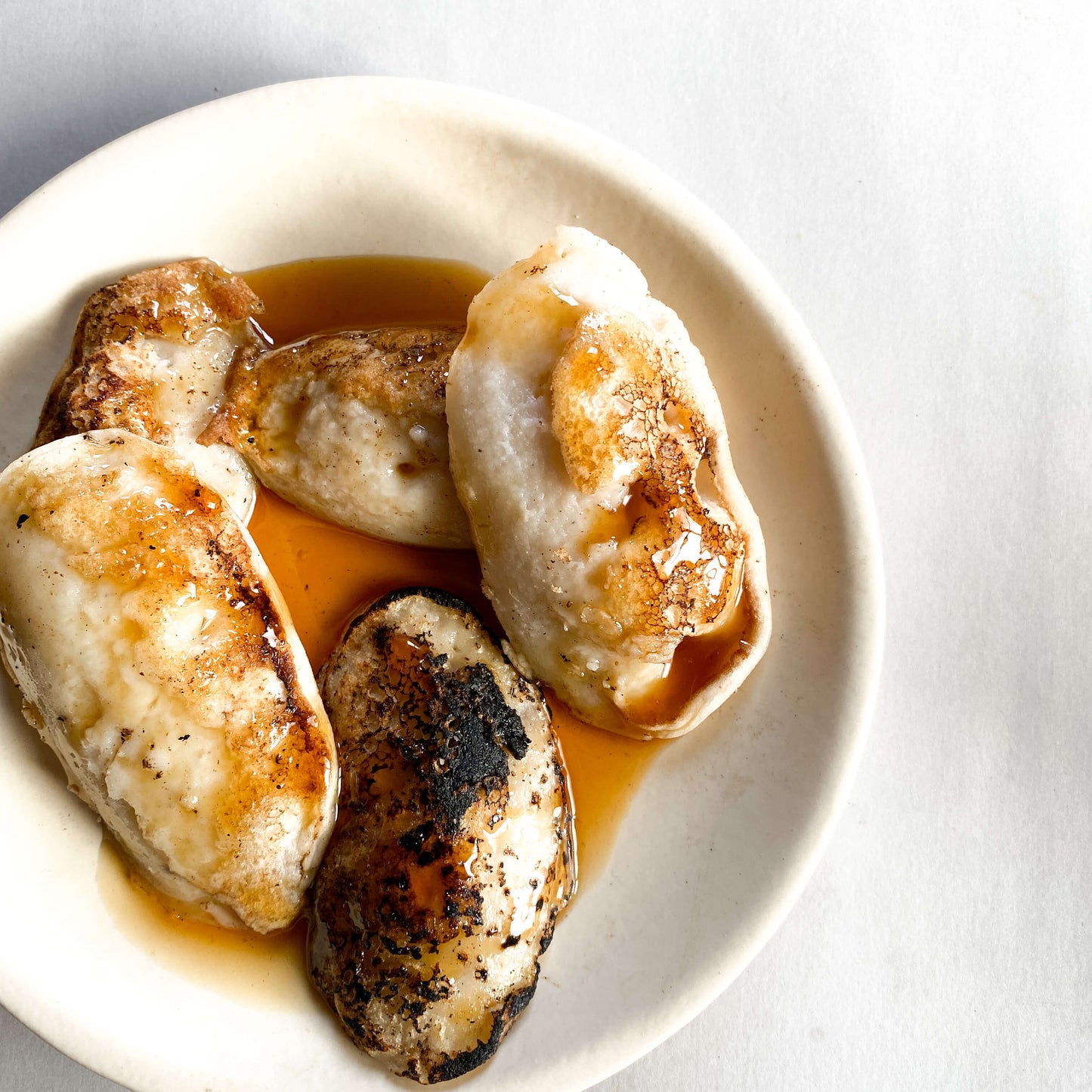Earthen Pithe Mould
Earthen Pithe Mould
Couldn't load pickup availability
This one is the traditional earthen mould that has been a favourite tool in the winter season for generations in Bengal. It forms an intrinsic part of the socio-cultural fabric of rural Bengal and Bangladesh, where new harvest is celebrated on poush-parbon. The moulds are baked in a traditional oonoon and have four slots for you to make that many pithas at a time. It can be used in a regular stove top but not on an induction or electric kitchen top/ hot plate.
The earthen base lends its characteristic wet, earthy flavour with a delightful char to the pithas. Make sure to season the mould before using it for the first time.
Notes on seasoning the mould (we have found this one to suit us the best, you can still find some other ways online):
- Soak the moulds, preferably overnight, with the lid, in a bucket full of water.
- Take them out of the water and scrub gently with a coconut fibre scrubber, to remove the loose upper layers of clay (a new, regular kitchen scrubber will also do the work, so will a steel wool scrubber).
- Wash them under running water and let them dry out in the sun.
- Once completely dry, put the mould over medium-high flame and sprinkle generously with common table salt. Swirl the salt around the mould for a couple of minutes until the salt turns a bit brownish. Do not discard the roasted salt. It is completely edible and usable.
- Now wipe off the excess salt and apply a thin layer of any regular flavourless oil on the mould. Once the mould soaks in the oil, you are ready to use it.
- Don’t get disheartened if the first couple of batches of pithas do not come out easily. Just keep at it and in no time, it will be a fun exercise.
- After using the mould, soak it in warm soapy water for a few minutes, scrape off the remaining pitha bits that you could not get all out while cooking, wash under running water and dry it out in the sun. Apply a thin layer of oil before stashing it for next use.
Basic shora pitha recipe:
- Shora pitha is best made if the rice is freshly ground. You do not want super fine powder, rather somewhere between medium coarse and fine. Our Kalonunia rice flour does the job perfectly.
- Next, bring some water upto a boil and cool it down to lukewarm.
- In a bowl, mix the rice flour with a pinch of salt and add the lukewarm water, gently stirring it in.
- You should have a consistency that is in between a fluffy pancake batter and a neer dosa batter; quite thin but not thin enough. Adjust your water and flour proportion accordingly.
- Once you are ready with your batter, heat up the mould and brush thinly with regular vegetable oil (some use mustard oil as well, for a quite different flavour and aroma).
- As the mould starts to smoke, gently lower the heat to a medium-low and pour ladles of the batter till a bit below the edges. Lower the heat and cover with the lid. Cook them only on one side for about 2.5-3 minutes, remove the lid, loosen the pitha around the edges and take them out one by one.
- For the next batches, as the mould keeps on heating and smoking, bring down the temperature by splashing some water (just like making a dosa). As the water dries out, apply a thin layer of oil and continue as before till your batter runs out.
- Serve with a generous drizzle of gur with or without coconut. You can also have them with some meat broths and easily substitute them for a morning breakfast with some chutneys and achars and poached eggs.
| sourced from | North 24-Parganas, West Bengal |
| processing | hand-made and baked |
Share
